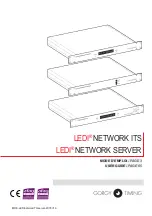
Chapter 7
Autorouting and Autoplacement
©
National Instruments Corporation
7-5
•
SMD Rotation Mode
—Used to set amount by which
surface-mount parts can be rotated during autoplacement. Select
one of
None
, for no rotation;
90 Deg
, for 90 clockwise rotation of
all autoplaced SMD parts;
0 or 90 Deg
, to have parts either not
rotate, or rotate 90 clockwise;
90 Deg Steps
, to have parts rotate
either 90, 180, or 270 degrees clockwise.
•
Global Part Spacing
—Enter the minimum allowed space
between parts.
6.
In the
Miscellaneous
area:
•
Use Pin/Gate Swap
—Check to enable pin/gate swapping during
autoplacement of parts. Exchanges the nets of gates and/or pins
and pin groups, where gates or groups can also be swapped
between different parts.
•
Use Part Swap
—Check to enable part swapping during
autoplacement of parts. Mutually exchanges identical parts at
their insertion position in order to minimize trace lengths.
7.
Click
OK
to apply settings.
8.
If you wish to return the values to the default settings, click
Default
.
Caution
The
Default
button sets default values for all tabs in the
Routing Options
dialog
box.
Strategies to Achieve Better Part Placement
Occasionally, the autoplacer is unable to place all the parts in a design. In
this case, try one or more of the following:
•
Reduce the part spacing.
As part expansion values get larger, the area
in which the autoplacer can place parts gets smaller. Reducing the part
spacing allows the autoplacer to pack parts more densely.
•
Use part rotation.
If you restrict part rotation, the autoplacer is not
able to reorient the parts for the most efficient fit on the board. Use a
less restrictive rotation mode setting to allow Ultiboard to reorient the
parts as necessary.
•
Allow SMD mirroring.
Allows Ultiboard to place parts on both sides
of the board. This doubles the area on which the autoplacer can arrange
parts, and eases the space requirements on the top side of the board.
Note
All of the above are set up in the
Autoplace
tab of the
Routing Options
dialog box.
Refer to the
section for more information.















































